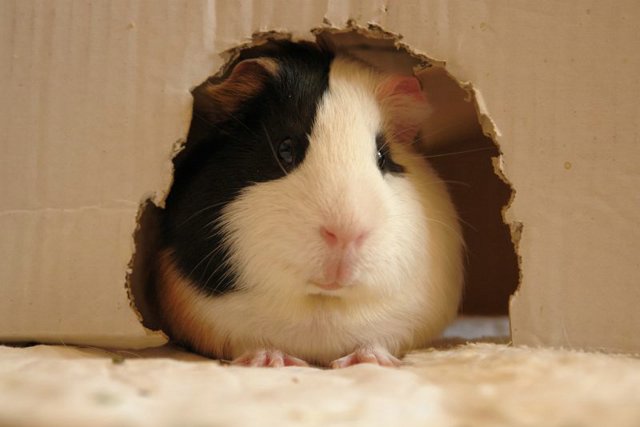is a species of rodent belonging to the family Caviidae and the
genus Cavia. Despite their common name, these animals are not pigs,
nor do they come from Guinea. They originated in the Andes,
and studies based on biochemistry and hybridization suggest they are
domesticated descendants of a closely related species of cavy such as
Cavia aperea, C. fulgida, or C. tschudii, and therefore do not exist
naturally in the wild.The guinea pig plays an important role in the folk
culture of many Indigenous South American groups, especially as a food
source, but also in folk medicine and in community religious ceremonies.
Since the 1960s, efforts have been made to increase consumption of the
animal outside South America.
In Western societies, the guinea pig has enjoyed widespread popularity
as a household pet since its introduction by European traders in the 16th
century. Their docile nature, their responsiveness to handling and feeding,
and the relative ease of caring for them, continue to make the guinea pig a
popular pet. Organizations devoted to competitive breeding of guinea pigs
have been formed worldwide, and many specialized breeds of guinea pig,
with varying coat colors and compositions, are cultivated by breeders.
Biological experimentation on guinea pigs has been carried out since the
17th century. The animals were frequently used as a model organism in the
19th and 20th centuries, giving way to the metaphor "guinea pig" for a test
subject, but have since been largely replaced by other rodents such as mice
and rats. They are still used in research, primarily as models for human medical
conditions such as juvenile diabetes, tuberculosis, scurvy, and pregnancy complications.












